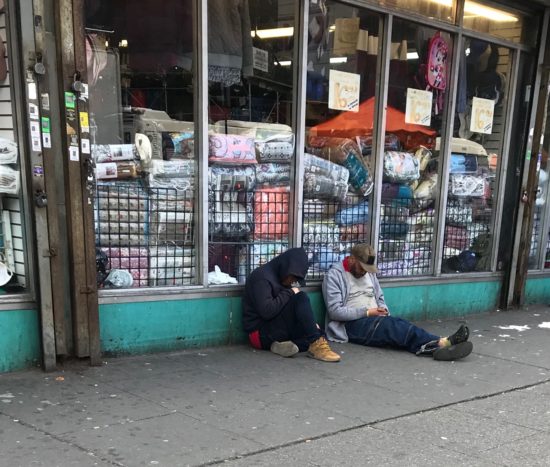
Meeting addicts with sympathy, not scorn, improves chances of rehabilitation, say health care professionals
On a recent evening, Zadel DeLeon was afraid to let his girlfriend, Jennifer Pera, walk alone at night down 149th Street near Third Avenue after she had left his apartment.
Concerned that police aren’t doing enough, DeLeon, 20, worries that as the number of individuals with addiction on the street keeps rising, the area around The Hub is growing increasingly unsafe.
“You don’t see enough police in the streets,” said DeLeon, adding that he wants to see more police patrols, as well as arrests of those acting violently.
DeLeon is not alone in his worries. Residents’ complaints have steadily increased about chronically homeless and idle individuals, resulting from both the high rate of drug abuse, and crime on the streets of the South Bronx.
But public health professionals question the accuracy of that perception. They argue that criminalizing drug users makes the problem worse, adding that despite an investment of millions in New York State by the federal government to combat addiction, a cultural shift is necessary to slow down the opioid crisis.
“They have a lot of shame, and a lot of fear because of their addiction,” said Bart Majoor, Deputy and Clinical Director at St. Mary’s Corner for Harm Reduction. Majoor has nearly 30-years of experience as an addiction specialist. “As this builds, you begin to see them start to go underground, and take greater risks. This could result in them getting hepatitis, or worse, HIV.”
The stigma surrounding addiction has made it more difficult to build new addiction centers to treat users and aid in the recovery process, said one 20-year professional in the field.
“We’re located in a place where our patients cannot reach us. They do not want [our facility] in the area near Lincoln Hospital.” said Angela Torres, an addiction counselor at Lincoln Recovery Center.
That stigma was part of the reason that recovery facility was forced to open up 10 blocks away from the hospital, on E. 142nd Street.
Six of the borough’s 65 treatment facilities are located below 149th Street, according to the Office of Alcoholism and Substance Abuse Services (OSAS) website.
Addiction specialists say that although it is understandable that South Bronx residents should want less commotion on their streets, they can help contribute to fighting the opioid crisis with patience and compassion rather than pushing for the criminal justice system to intervene.
“We’re 40 years into the war on drugs, and it’s been such an incredible waste of time, and money, and energy when you talk to most insiders.” said Dr. Majoor. “We need to actually treat this like a medical issue, not like a crime.”

